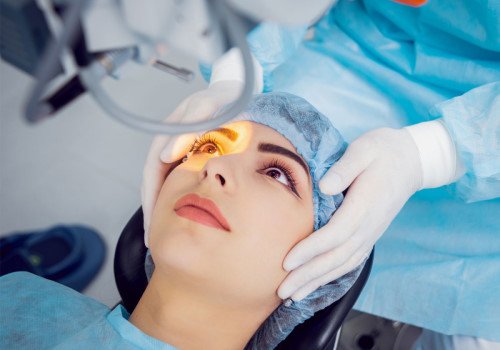
Artificial Eye Fitting at Netra Eye Clinic
Artificial Eye (Ocular Prosthesis) – Netra Eye Clinic
An artificial eye, or ocular prosthesis, is a custom-made device used to replace a lost or damaged natural eye, commonly after surgical removal due to trauma, cancer, or severe infection. While it doesn’t restore sight, it restores appearance and helps protect the eye socket's structure.
Symptoms/Indications: Eye removal may be necessary due to severe injury, painful blind eye, tumors, congenital absence of the eye (anophthalmia or microphthalmia), or irreversible infections and conditions.
Purpose: Cosmetic restoration, eyelid function support, prevention of facial asymmetry, and emotional healing. It helps boost confidence and social interaction by providing a natural appearance.
Procedure: After healing from eye removal surgery (enucleation or evisceration), a custom-made artificial eye is fitted by an ocularist. The prosthesis is carefully matched in color and shape to the natural eye for realistic results.
Care Tips: Daily cleaning, avoiding trauma, regular check-ups, and timely replacement (every 5–7 years) are essential for hygiene and comfort. A well-fitted artificial eye is safe, non-irritating, and discreet—improving appearance and self-esteem.


Premium Artificial Eye Options
Premium ocular prostheses offer higher precision, comfort, and aesthetic appeal using advanced materials and customization techniques. They are tailored to the individual's socket and eye color, providing superior cosmetic results.
Types::
- Stock Prosthesis: Pre-made, basic fit, limited customization.
- Custom-Made Prosthesis: Tailored to the individual’s socket with hand-painted iris and sclera for realistic appearance and better comfort
- Implant-Supported Prosthesis: Combined with orbital implants for better eye movement and socket preservation.
Benefits: Natural-looking appearance, increased comfort, better eyelid movement, reduced socket complications, and enhanced self-confidence.
Suitability: Ideal for patients seeking a more lifelike and comfortable prosthesis after eye removal. Recommended for all ages, especially those with visible socket exposure or movement concerns.
Considerations: More expensive than standard versions, but with improved aesthetics and long-term satisfaction. Requires skilled ocularist and periodic maintenance.
Types of Artificial Eye
Artificial eyes are categorized based on how they are fabricated and the medical technique used post-surgery.
Stock Ocular Prosthesis: Mass-produced and available in standard sizes and colors. These are cost-effective but less realistic and may not fit all socket shapes properly.
Custom Ocular Prosthesis: Individually designed and painted by an ocularist. These match the patient’s eye color, shape, and socket structure for improved appearance and comfort.
Implant-Integrated Prosthesis: Used with orbital implants inserted during eye removal surgery. The implant allows some movement, making the prosthesis more lifelike.
Pediatric Prosthesis: Specially designed for children born without an eye or those who lose an eye early in life. As the child grows, frequent resizing and replacements are needed.
Scleral Shell Prosthesis: A thin artificial shell fitted over a disfigured or shrunken eye (not fully removed). It offers a non-surgical cosmetic improvement for partial vision or blind eyes.


Artificial Eye Treatment & Fitting Process
The process of fitting an artificial eye begins after enucleation or evisceration surgery. Once the socket heals (usually 6–8 weeks), a temporary conformer is replaced with a custom prosthetic eye.
Initial Phase: An impression of the socket is taken to design a perfect mold. The prosthesis is then hand-painted to match the other eye’s color, including blood vessels for realism.
Fitting: The ocularist tests fit and comfort. Final adjustments ensure natural eyelid movement and symmetry. The artificial eye is placed in the socket and does not cause pain.
Follow-up Care: Regular polishing, cleaning, and professional review are essential to maintain luster and avoid socket infections. Replacement every few years ensures ongoing fit and comfort
Emotional Recovery: Patients often regain self-esteem and social confidence. Counseling and education about care can ease adaptation. With modern designs, artificial eyes look natural and enable a normal lifestyle.
Frequently Asked Questions
Answers to Your Most Common Questions About Artificial Eye Fitting
